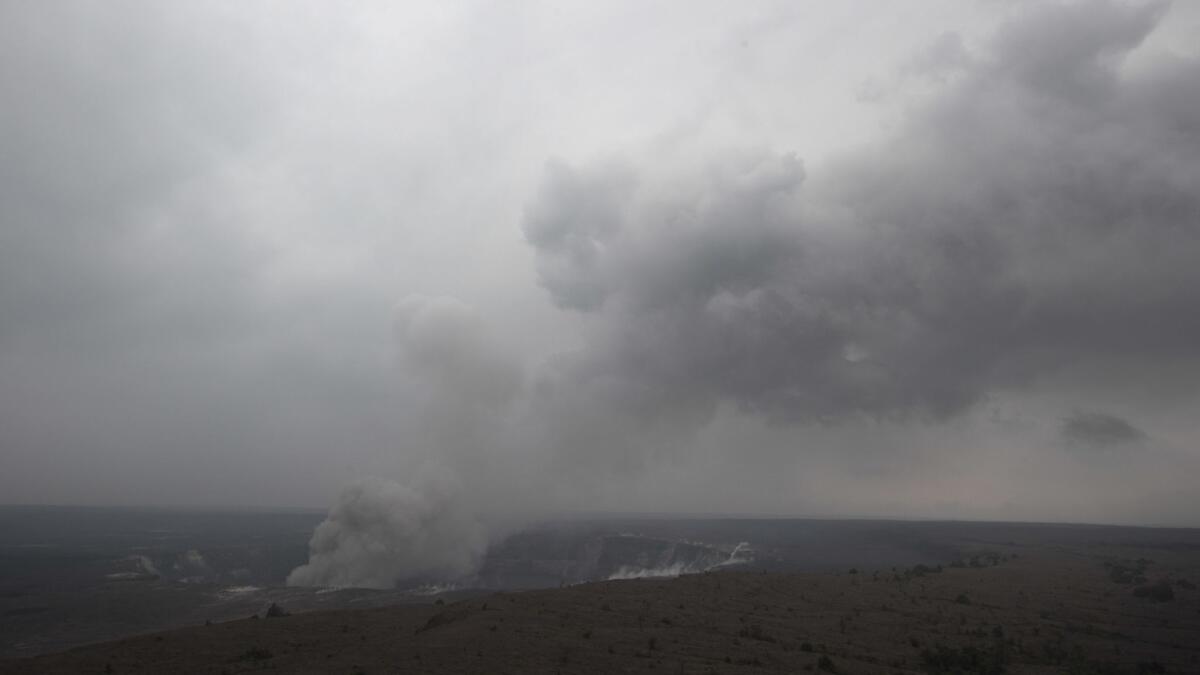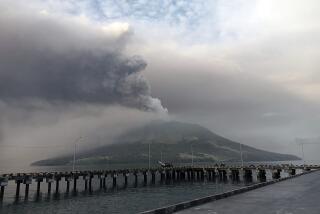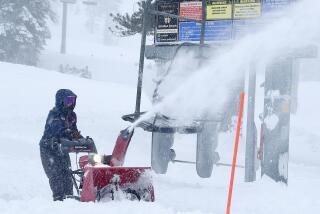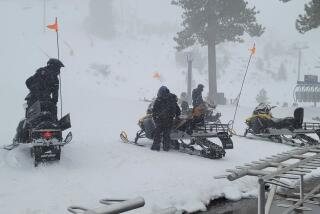Park is closed around Hawaii volcano over fears it will erupt

Reporting from Pahoa, Hawaii — The national park around Hawaii’s Kilauea was off-limits to visitors Friday for fear the volcano will blow its top in the coming days and hurl ash and boulders the size of refrigerators miles into the air.
“If it goes up, it will come down,” said Charles Mandeville, volcano hazards coordinator for the U.S. Geological Survey. “You don’t want to be underneath anything that weighs 10 tons when it’s coming out at 120 mph.”
An explosive eruption could also ground planes at one of the Big Island’s two major airports and release steam and toxic sulfurous fumes.
The volcano has been sputtering lava for a week, forcing about 2,000 people to evacuate, destroying two dozen homes and threatening a geothermal plant. Scientists are now warning of the possibility of a violent eruption caused by trapped steam.
The volcano park closed indefinitely Thursday night because of the risks.
“We know the volcano is capable of doing this,” Mandeville said, citing similar explosions at Kilauea in 1925, 1790 and four other times over the last few thousand years. “We know it is a distinct possibility.”
The danger zone from such a blast could extend about 3 miles from the summit, land that all falls within the national park, Mandeville said. No one lives in the immediate area of the summit.
He would not estimate the likelihood of such an explosion but said internal volcanic conditions are changing in a way that could lead to a blast in about a week.
Kilauea has destroyed 36 structures — including 26 homes — since May 3, when it began releasing lava from vents about 25 miles east of the summit crater. Fifteen vents are now spread through the Leilani Estates and Lanipuna Gardens neighborhoods.
Gov. David Ige said crews at a geothermal energy plant near the lava outbreak accelerated the removal of stored flammable fuel as a precaution. The Puna Geothermal Venture plant had about 50,000 gallons of pentane. It was removed early Thursday.
Barbara Lozano, who lives within a mile of the plant, said she would have thought twice about buying her property if she had known the risks.
“Why did they let us buy residential property, knowing it was a dangerous situation? Why did they let people build all around it?” she asked.
Avani Love, 29, moved to the Big Island about a month ago from Maui with her four children. They evacuated their home May 3 and found out it was destroyed when a relative went back to get some belongings.
She said she was sad to lose her home but also felt a sense of renewal brought on by Pele, the Hawaiian volcano goddess. She said the eruption was Pele’s way of correcting overpopulation of the island.
“Everyone comes here,” she said. “When you have that, it’s Pele’s way of clearing house and restoring the place. There’s beauty and also darkness.”
If the volcano blows its stack, communities about 2 miles away could be showered with pea-size rocks or dusted with nontoxic ash, said Tina Neal, scientist-in-charge at the Hawaii Volcano Observatory.
The small town of Volcano, Hawaii, population 2,500, is about 3 miles from the summit.
Janet Coney, office manager of the Kilauea Lodge, an inn and restaurant, said officials told her lodge employees probably won’t have to worry about rocks raining down on them but might experience falling ash.
More to Read
Sign up for Essential California
The most important California stories and recommendations in your inbox every morning.
You may occasionally receive promotional content from the Los Angeles Times.










